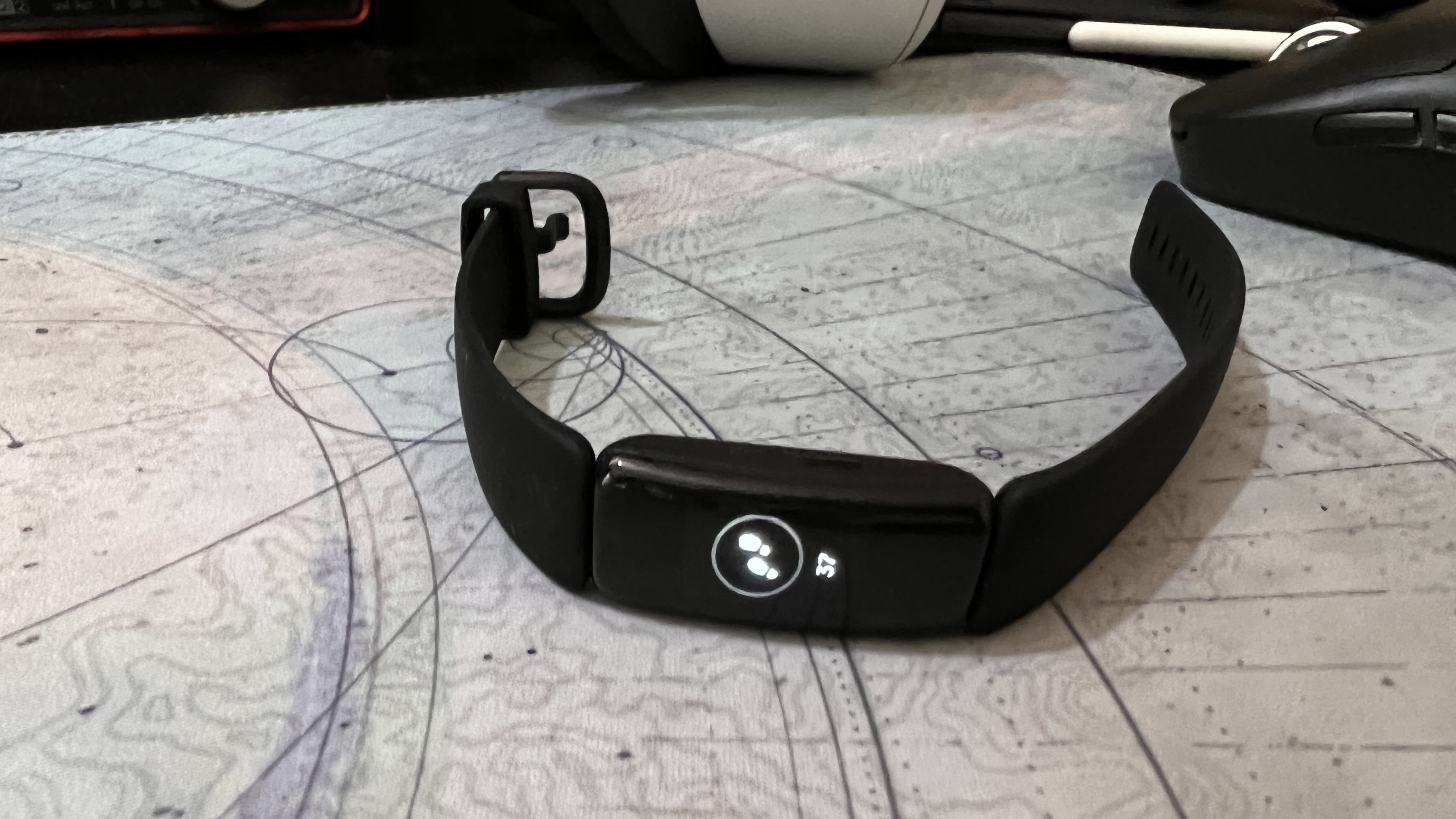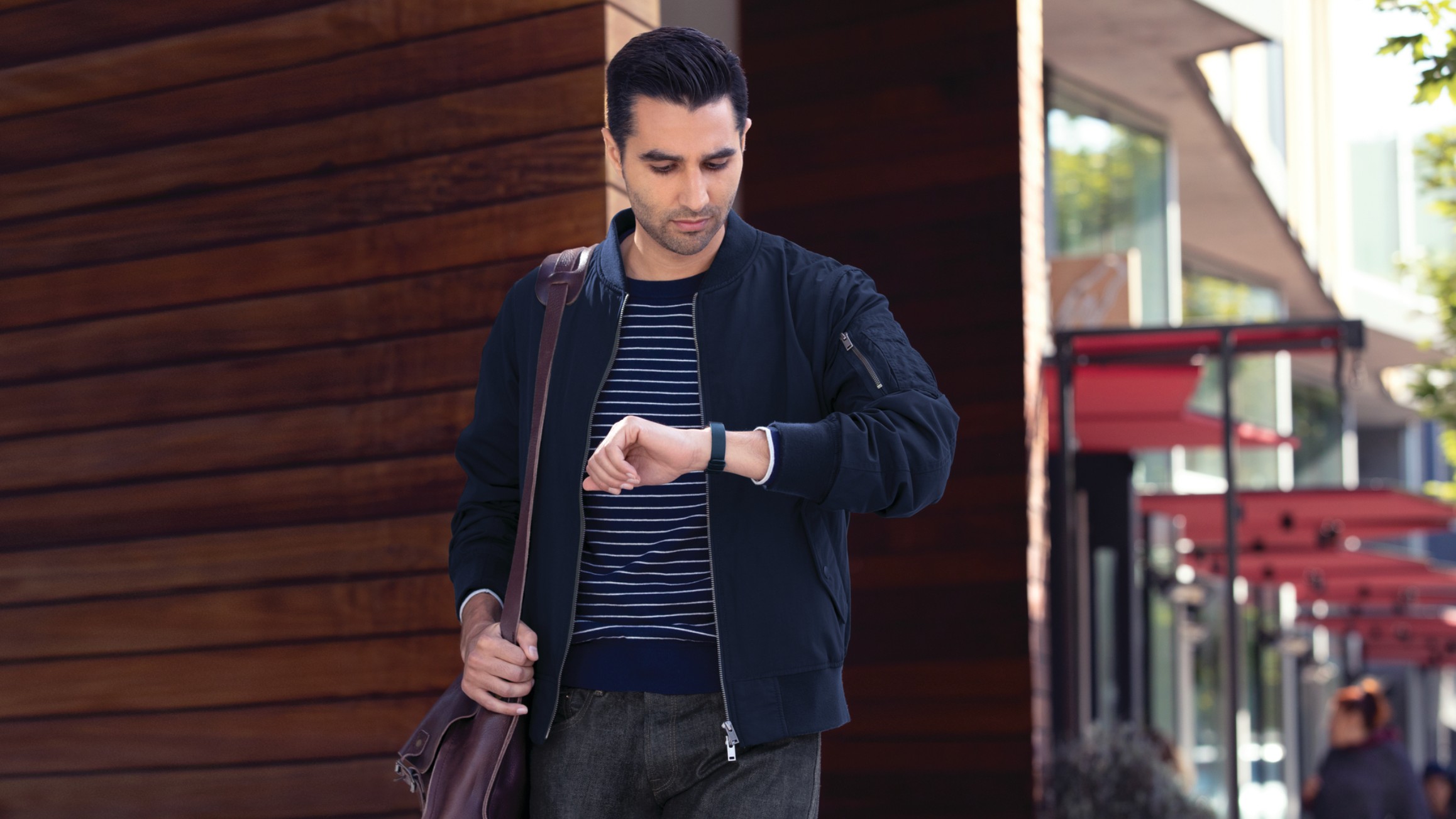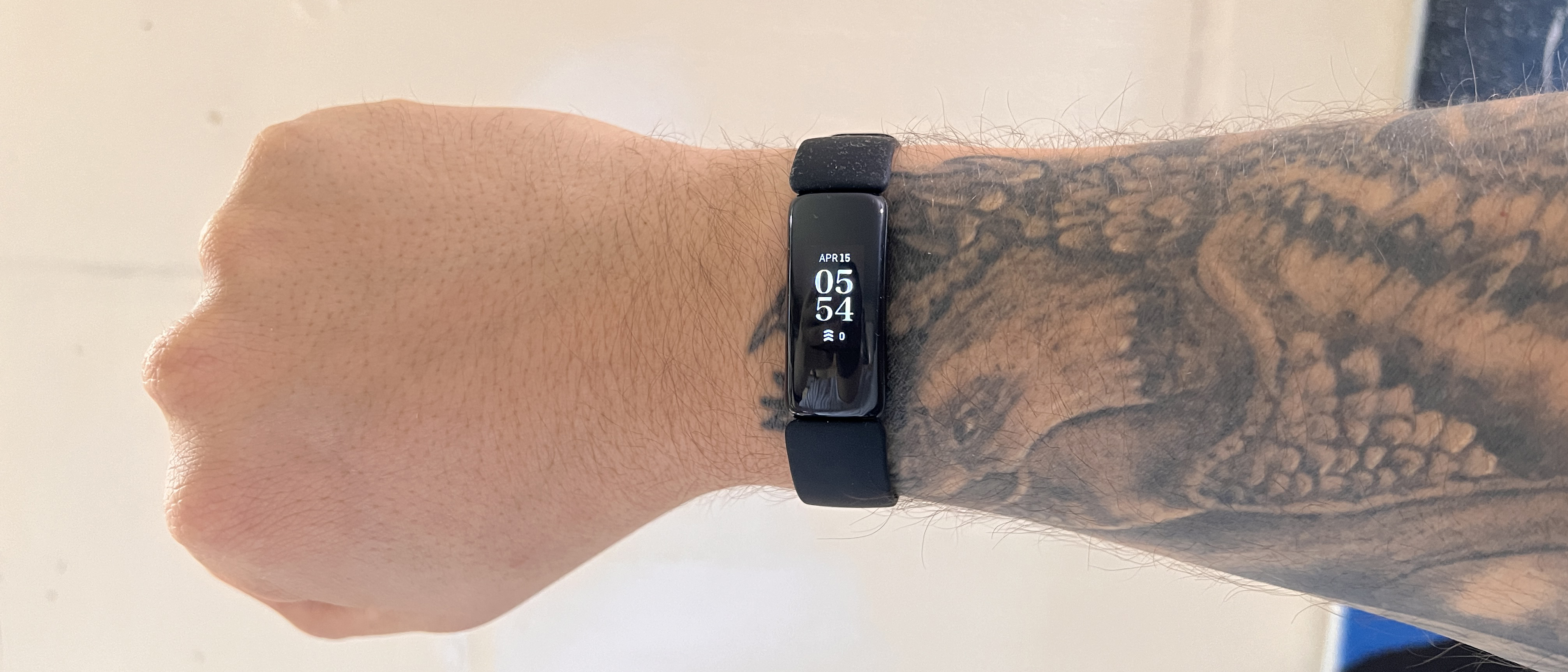Live Science Verdict
A barebones fitness tracker that does a few things well, the Fitbit Inspire 2 is an ideal first health tracker.
Pros
- +
Easy to use
- +
Small
- +
Low price
Cons
- -
Lacks features found in others in the lineup
- -
No GPS
Why you can trust Live Science
Fitbit Inspire 2 is a health tracker that’s ideal for those looking to start understanding their body’s natural rhythm and realize their own fitness goals.
It’s the most affordable Fitbit in the range but still offers plenty of features, including heart-rate tracking, sleep-tracking and the ability to see notifications on your wrist.
Compatibility: iOS and Android phones
Battery life: Around 10 days
Memory size: No onboard memory for media or apps, seven days of fitness data stored locally.
Display: 1.4in OLED (black and white)
GPS: No
Water resistance: Up to 50 meters
Heart rate tracker: Yes
Sleep tracker: Yes
Music: None
There are compromises to hit that price point, though: there’s no blood oxygen level, no GPS and its 1.4in display isn’t as colorful as the likes of the Fitbit Luxe. In fact, there’s no color at all, although it is bright enough to be read anywhere. The best fitness trackers, in our opinion, tend to have all of the above features and more.
In some areas, it’s better than the more expensive trackers in the lineup – including a year of Fitbit Premium as opposed to six months and almost a week and a half of battery life.
If you’re looking for a first Fitbit to set modest step goals, the Inspire 2 is a great choice. Is it the best Fitbit out of the lot? Here’s what we made of it after testing.
Price and release date

- Launched September 2020
- Can be found discounted
The Fitbit Inspire 2 has been available since September 2020 and retails for $99.95 (UK £90). However, it’s typically found for around $60, so it’s worth hunting for a deal. The Fitbit Inspire 2 comes with a year of Fitbit Premium.
Design and display
- Still small and easy to forget you’re wearing it
- No color display
The Inspire was a breakout success for Fitbit and the second iteration doesn’t change a great deal. It is more curved than its predecessor but otherwise almost exactly the same size.
Get the world’s most fascinating discoveries delivered straight to your inbox.
That means it’s still tiny, and makes all-purpose fitness trackers, like the Apple Watch 7 or Fitbit’s own Versa 3, feel huge by comparison.
The strap is the same as the last one, too, with an “elastomer” band that’s comfortable and comes in two sizes.
The bulk of the device is taken up by the OLED screen and the black and white display is easy to read in sunlight or indoors. It’s crystal clear, too, because the 1.4in screen makes the most out of the modest resolution. However, the lack of colored icons may affect users with vision impairments. Without color, many of the icons look similar at a glance.
The Fitbit Inspire 2 comes in Black, Desert Rose, and Lunar White.
- Related: Best running watches

Features
- Works with Fitbit app
- Fewer sensors than more-expensive trackers in range
While the Fitbit Luxe squashes all sorts of sensors into a svelte frame, the Fitbit Inspire 2 is more restrained. Yes, it will track your steps, the distance you’ve moved, calories burned, and has menstrual cycle tracking. It’ll also track your heart rate, which wasn’t in the Inspire 1’s bag of tricks – unless you opted for the Inspire HR.
Sleep tracking is here – and looks at stages of sleep to calculate a sleep score that feeds into preparing you for the day ahead. Unfortunately, though, there’s no ECG or EDA scan, and you won’t find an NFC chip for Fitbit Pay. It will let you read messages and notifications on your wrist.
The slimline display means you can expect to scroll through text regularly, especially if you get a lengthy message.
The data collected is used to put together a Daily Readiness Score for you as part of Fitbit Premium. This will indicate how best to make use of the day ahead, be that through exercise, recovery, or maximizing rest.
Fitbit Premium is included as a six-month trial with other Fitbit models, but here you get a year, which is worth more than you can buy the Inspire 2 for. Is it worth it? Yes, even if just for that year – you’ll get personalized training recommendations, diet ideas, and that all-important Daily Readiness score.
- Related: How accurate are fitness trackers?

Performance
- No GPS
- Impressive battery life
The Fitbit Inspire 2 doesn’t have GPS tracking, but it can piggyback off your phone’s GPS connection, so if you’re happy to carry your iPhone or Android device you’ll still be able to see how much quicker you’ve got when running your route or cycling.
There’s also no onboard storage available for music, so don’t expect to load the Inspire 2 up with a playlist or podcast.
Step-tracking is accurate when tested against the Apple Watch Series 7 and the Fitbit Sense – both significantly pricier devices. Heart-rate tracking is solid, too, taking just a few seconds to catch up when you go from a run to a walk or vice versa.
Given the small size of the Fitbit Inspire 2, its battery life – advertised as being enough for 10 days – is incredible. While fewer sensors and a monochrome screen undoubtedly help, we hit nine and a half days of use without a charge, and that includes workout and sleep tracking, too.

Verdict
The Fitbit Inspire 2 is an ideal fitness tracker for those initial steps into getting active. Metrics like steps, calories and heart rate are important at any point of your fitness journey, but none more so than when starting out.
If this isn't for you
For more features (and a color screen), the Luxe offers the next step up in the Fitbit range, while the Versa 3 adds more sensors and expands more into smartwatch territory.
We’re hesitant to suggest the Apple Watch given that the Series 3 seems primed for the chop soon and there’s nothing Apple makes for iOS users at this price range, either.
Lloyd Coombes freelance tech and fitness writer for Live Science. He's an expert in all things Apple as well as in computer and gaming tech, with previous works published on TechRadar, Tom's Guide, Live Science and more. You'll find him regularly testing the latest MacBook or iPhone, but he spends most of his time writing about video games as Gaming Editor for the Daily Star. He also covers board games and virtual reality, just to round out the nerdy pursuits.


